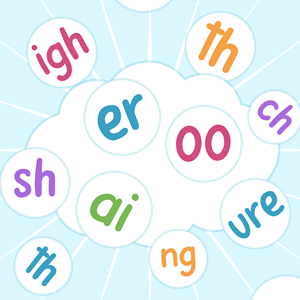What is Phonics?

What is Phonics?
When children begin school, their parents know that learning to read is the foundation upon which all their future education will be built.
The Department for Education agrees. Phonics is a key component of the primary curriculum in Years One and Two, emphasising the development of early reading skills to help children become confident readers. You've probably heard of phonics, but you may not be sure about exactly what phonics is, and how it relates to the process of learning to read.
The Learning Process
Consider for a moment, what is involved in knowing how to read.
If you think about it, reading is a surprisingly complex activity! As you read this page, you are looking at groups of 'squiggles', 26 different squiggles to be exact. When you went to school you learnt that these 26 squiggles are the letters of the alphabet, each of which represents a particular sound. These squiggles are not the sounds themselves - they are simply symbols that represent those sounds.
The use of these symbols is actually quite arbitrary. Is there any reason why a particular symbol represents a particular sound? The use of a round symbol may seem to logically represent the shape or our lips when we say the vowel "o" but what about the other vowels, a, e, i or u? Why are those particular squiggles used? If you think about it, there is really no logical explanation, is there?
And what about consonants? The letter "s" looks a bit like a snake, and may remind you that a snake makes a hissing sound that sounds a bit like "ssss" - but what about the other letters of the alphabet? Can you explain why the same sound represented by "s" is also sometimes represented by "c" (for example, snake and 'city), or why "c" may also represent the hard sound "k" (for example, cake and 'kite)? Or why we sometimes use the letter "k" to represent that sound?
The letters of the alphabet form a code which, to someone who has not learnt what the code means, would seem to be a complete mystery. For instance, unless you have learnt to read Greek, you will not know that this:
is a group of written symbols which represent the spoken sounds "mystiriódi grafí", meaning "mysterious writing".
If you have not learnt to read, all the symbols you see will indeed seem to be "mysterious writing". In order to read English, Greek or any other alphabetic writing system, you need to learn that each squiggle that your eyes see is a grapheme, a visual symbol on paper that represents a particular phoneme or spoken sound.
The Phonics Curriculum
Phonics is a systematic method of teaching grapheme-phoneme correspondence, the relationship between spoken sounds and their written symbols, to beginning readers.
Phonics also helps children become good spellers. English spelling is illogical. One letter can sometimes represent several sounds, and the same sound can be represented by different letters.
Phonics also helps children become good spellers.
Phonics involves the teaching of rules to help children understand the apparently illogical nature of our writing system. They learn, for example, that the letter "c" is pronounced as "s" before "e" or "i" and as "k" before "a", "o" and "u". By teaching these rules, a phonics based approach to teaching children gives them additional 'tools' to crack the reading code.
If there is not a logical rule to explain particular spellings, the teacher introduces groups of words that demonstrate a spelling pattern such as the "oa" sound in words such as road, coat, oak and loaf.
By introducing early readers to the rules, and patterns, of English writing and spelling, phonics helps them use their decoding skills to read words they have never seen before and to develop the ability to read quickly and fluently.
In school, phonics is used as part of a reading programme that also involves whole word recognition of common words such as "the" or "an" as well as reading comprehension and appreciation.
How Can Parents Help?
As a parent, you can help your children become good readers long before they begin school by encouraging them to enjoy picture books, and by reading to them every day. As you read to your children, you can casually introduce them to phonics by running your finger along the text as you read, and by showing them how to 'sound out' individual words.
Continue reading: The Benefits of Phonics

